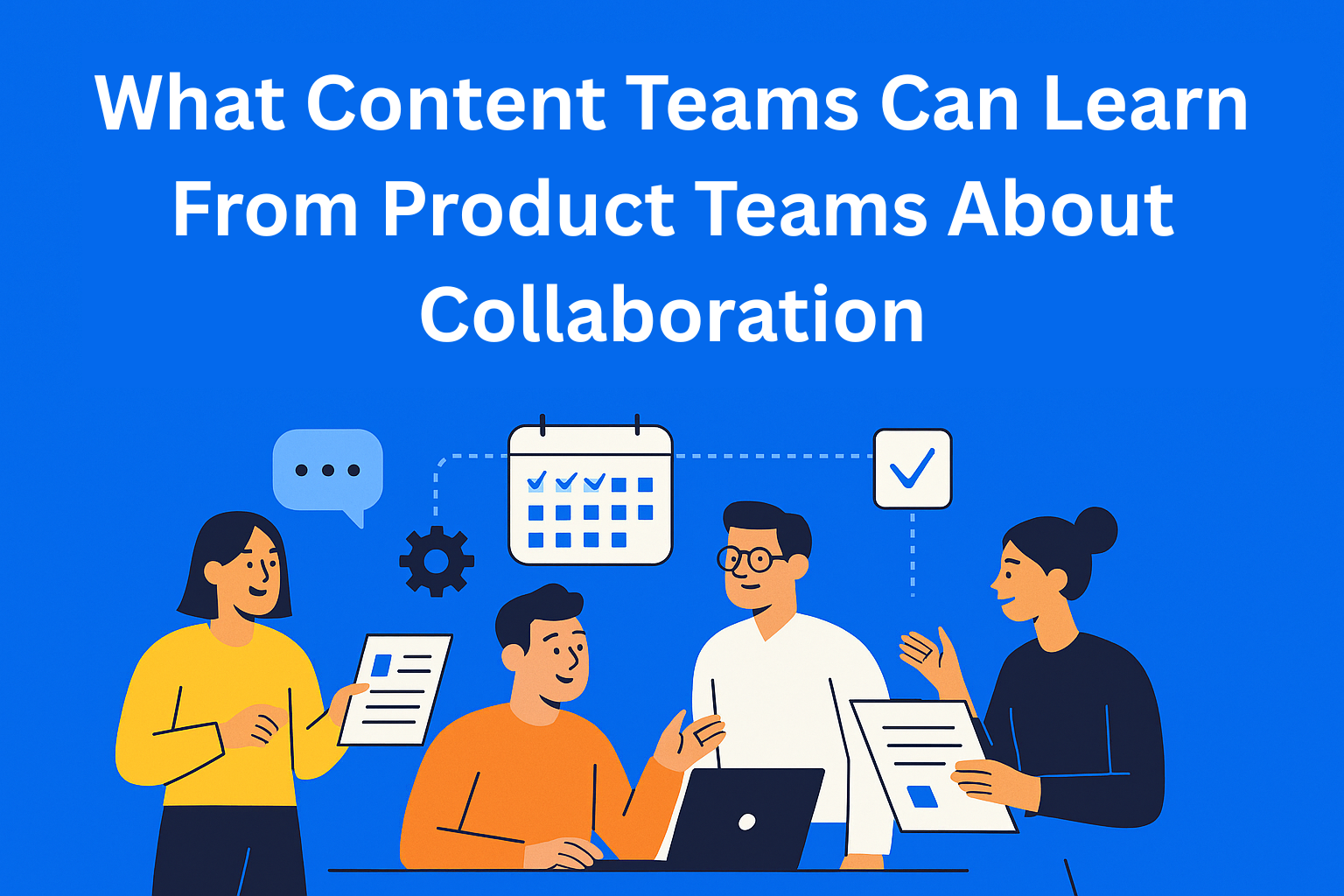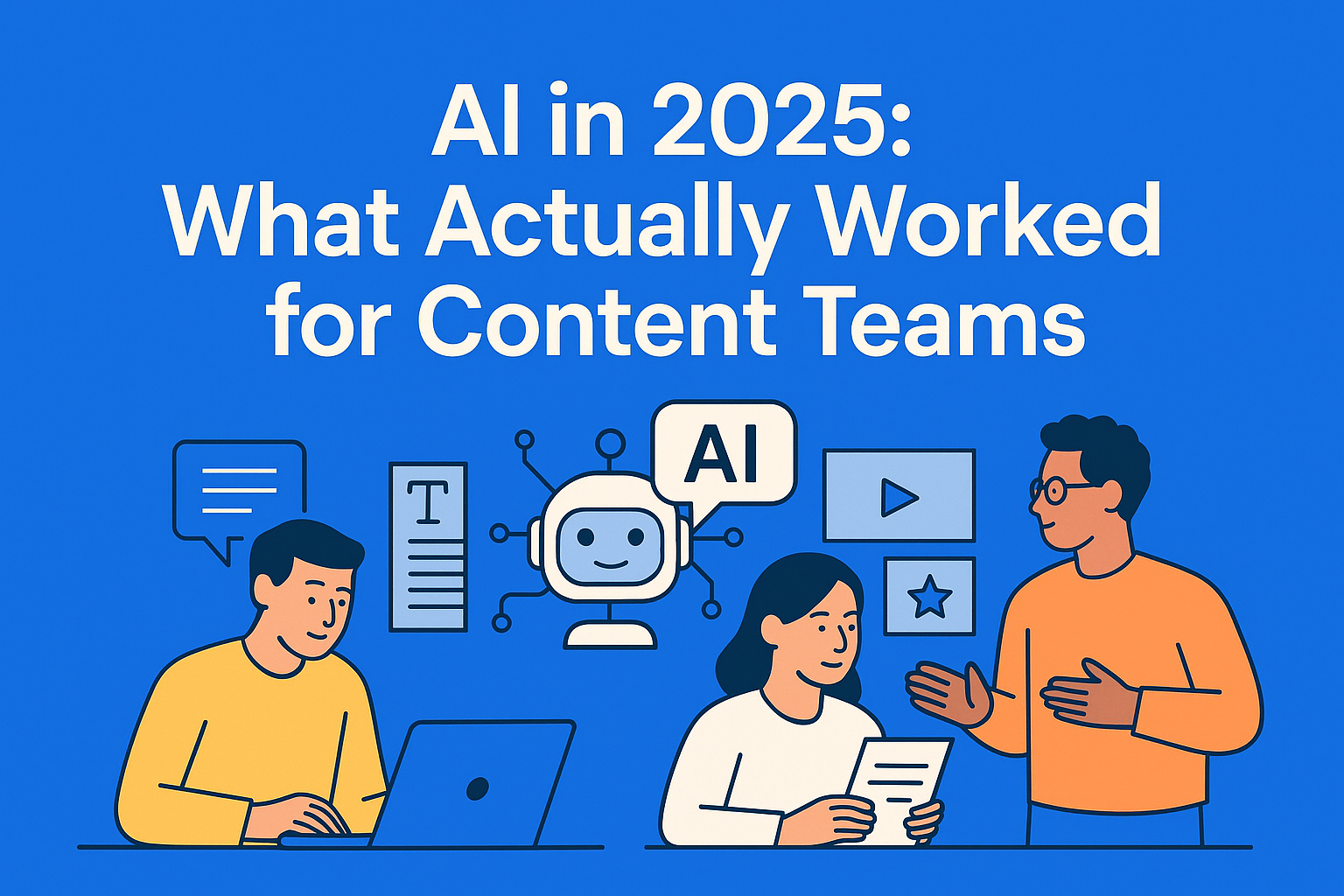Sustainable Content Creation: Preventing Burnout in Scaling Teams
Learn how to scale content creation without burning out your team. Discover sustainable content strategies, smart workflows, and how tools like EasyContent help content teams stay productive and balanced.

Imagine yourself opening Trello or Asana on Monday morning and seeing: another blog post to edit, another video waiting for a script, another newsletter due tomorrow. And it's like that day in and day out. Everything goes well - until the first signs of burnout appear. Stress builds up, deadlines are missed, and quality drops. If this sounds familiar, you're not alone.
In the era of constant content demand, scaling a content team without a clear strategy can easily go wrong. Sustainability in this context doesn't mean doing less, but working smarter. The goal is sustainable content creation - producing content that supports growth without exhausting the people who create it.
Key Takeaways
- Sustainability in content doesn’t mean doing less - it means creating smarter, longer-lasting assets with better processes.
- Burnout happens when content volume increases without clear workflows, defined roles, or room for recovery.
- Editorial calendars, templates, and automation are essential tools to reduce chaos and increase predictability.
- Repurposing content is a multiplier: one post can become a week’s worth of value across platforms.
- Team culture matters: A psychologically safe, well-supported team will always outperform a burnt-out one.
The Problem of Burnout in Growing Teams
When teams expand quickly and expectations explode, balance is easily lost. A Head of Content or Content Manager knows how hard it is to maintain the pace when you have 3x more requests and the same number of people. That’s where the problem begins.
- Sudden increase in volume: From a few pieces of content monthly to daily production
- Process confusion: Without a clear system, everything depends on goodwill and improvisation
- Multitasking overload: The writer is also the editor, designer, and SEO expert
- No room to recover: Creativity is a limited resource
The result? Creative fatigue, frustration, people leaving - which adds even more pressure to the team. Long-term, this directly affects the ROI of the content strategy and the quality of the brand.
What Does "Sustainable" Mean in the Context of Content?
Sustainable content doesn’t mean slowing down or producing less. On the contrary, it’s about creating content that lasts longer, is used wisely, and distributed efficiently. Instead of constantly chasing the next post, think ahead and reuse what you already have, in a smart way. It means knowing your goal, how to get there, and not wasting more energy than necessary.
Systems and Processes That Prevent Burnout
Without processes, everything happens randomly and chaotically. And that doesn’t work long term. Here’s what you can start doing today:
a) Editorial Calendar
Without a calendar, you’re creating content blindly. Wouldn’t a full visual of your content flow reduce stress since everyone knows what they need to do and when? EasyContent gives you exactly that. At any moment, it’s clear who is working on what and where the content is in the process - with deadlines, assignments, and statuses. All in one place.
b) Content Templates & Pillars
Not every text needs to be written from scratch. Set your content pillars and use templates so the team knows what goes where, how it starts, and what a good conclusion looks like. This not only saves time, but also preserves energy. A consistent structure improves quality and speeds up editing.
c) Repurposing System
One long-form blog = 1 newsletter + 3 short-form posts + 2 videos for social media. When you work smart, every piece of content is used to the max. With EasyContent, all files and materials are in one place, and the whole team can work on the same content at the same time without problems. Add a repurposing plan inside the editorial calendar, and everything flows even faster and more smoothly.
d) Automation and Tools
Automatic reminders, task assignments, status updates - EasyContent handles all of that. Your team doesn’t need to waste time sending emails and checking who did what. Automation means more time for strategy and creativity.
e) Role Assignment
Clearly define who is responsible for what. Who creates the content, who edits, who approves. EasyContent’s workflow feature allows each step to have its owner and responsibility. When everyone knows what they’re responsible for, there’s less chance of overload and frustration.
f) Reporting and Process Optimization
Tracking metrics (like time to publish, number of revisions, cycle time) helps optimize processes.
Team Culture and Psychological Safety
Processes are important, but without team support, they don’t mean much. People need to feel free to say when it’s too much or when they need a break. A team atmosphere where open conversation is encouraged, expectations are realistic, and effort is appreciated creates conditions where people can give their best without burning out. Trust, understanding, and flexibility are enough for a team to function long-term.
A healthy team culture + a good system = a sustainable content machine. If the team lead encourages balance, the team is much more likely to handle scaling without burnout.
Conclusion
If you lead a content team, don’t ask “how do we make more?” Ask “how do we make better content without burning out?”
Sustainability isn’t built overnight. It’s built through systems, healthy culture, and useful tools. Create in a way that keeps your team motivated long-term, and your content relevant long-term.






